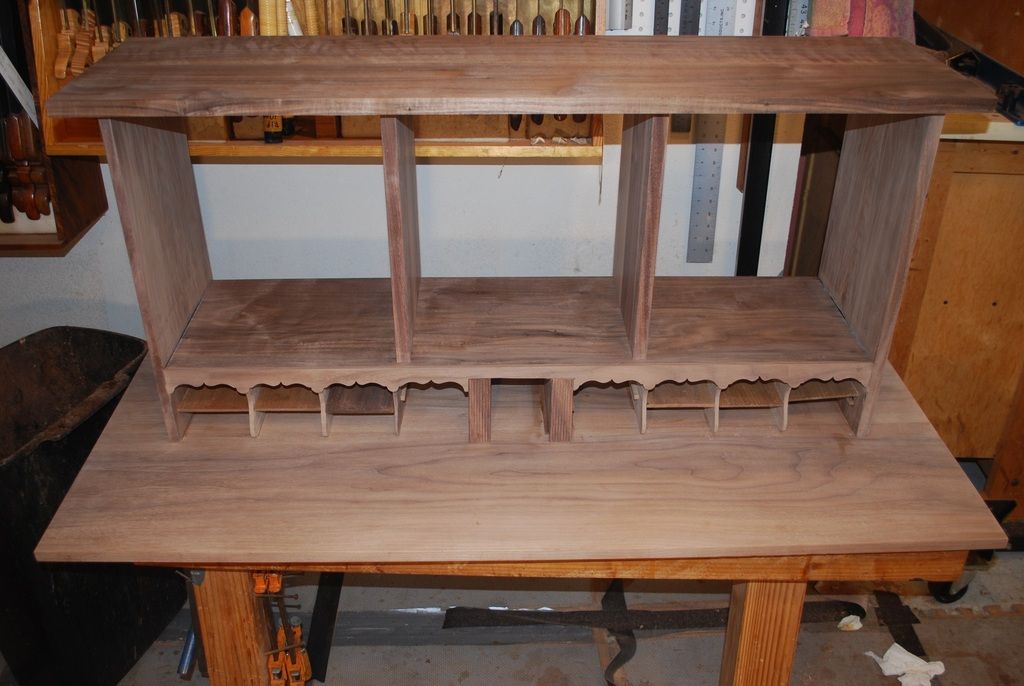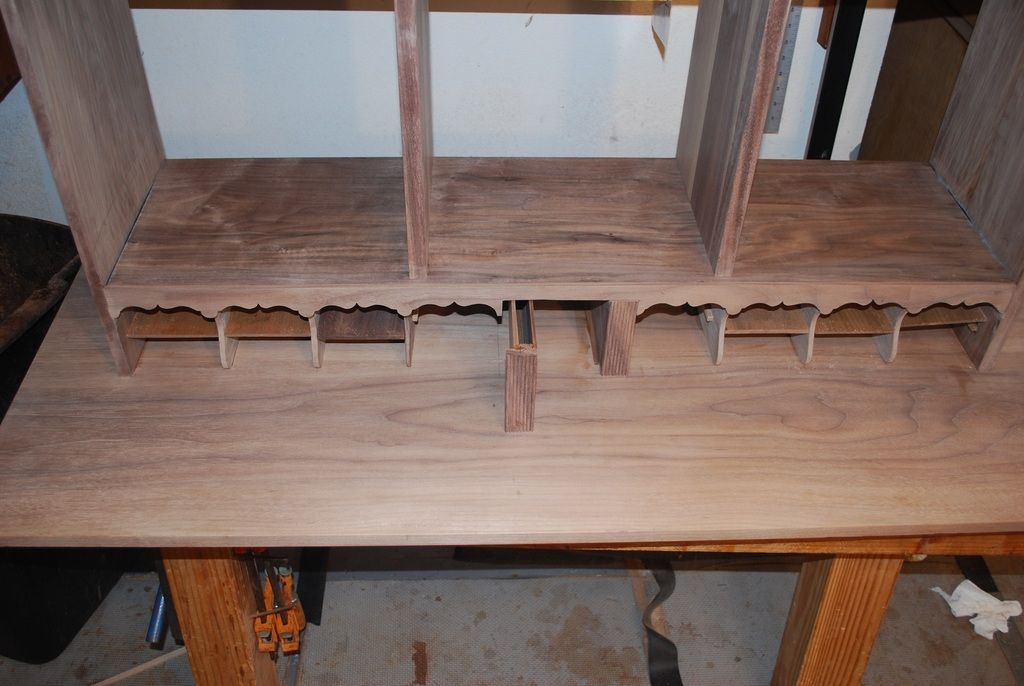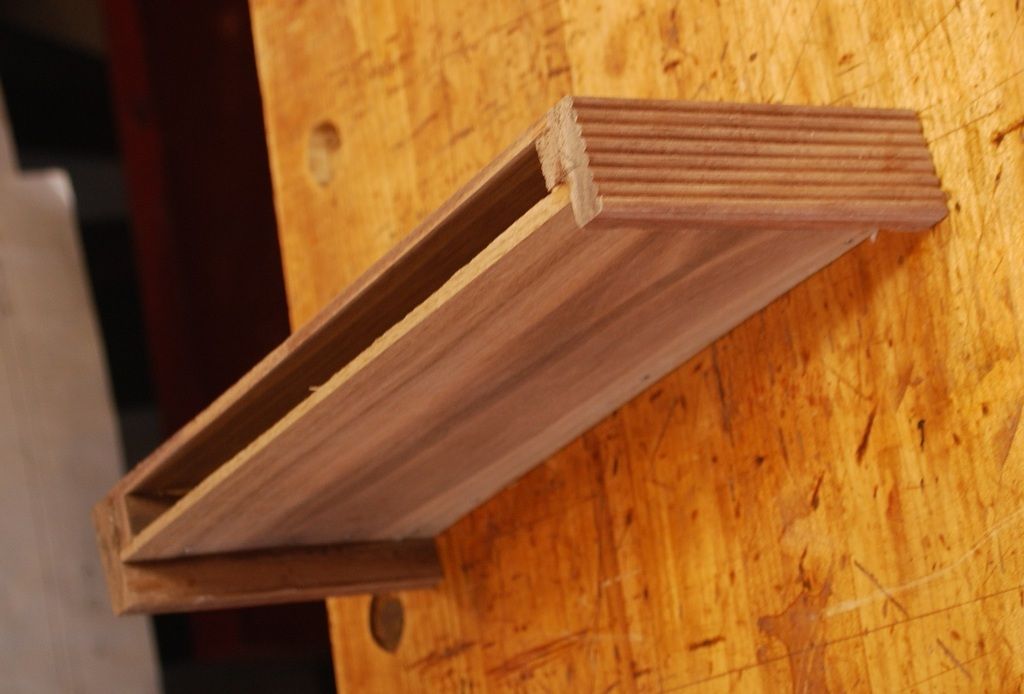Thanks all for your comments. I wonder if just because I enjoy hand tool build threads, am I imposing on the SMC community by posting mine. Goodness knows, it's frequently pointed out to me - just because I think something is interesting, doesn't necessarily mean anyone else shares my view. The usual context for this feedback is my family's response to my passionate interest in following the Los Angeles Dodgers. Somehow they just don't appreciate how critically important it is to watch every pitch when Kershaw's on the mound! Now that I think of it...... I'm pretty sure that's more about me than them. My apologies for the digression.
This post is part 2 of the Walnut Secretary build - the pigeonhole unit.
I’m still not sure about the profile for the Cabriolet legs so naturally I’ll put that off until it’s the only thing left, and then I’ll probably just end up using the template I already have.Here’s a couple pictures of building the small pigeonhole unit that fits under the bookshelf and on top of the desk surface.
Here’s a profile for vertical dividers. I try to use templates for curved parts. I used to make them out of wood but spent more time making the template than the workpieces so now I use sort of thick poster board which is easy cut with an X-acto and durable enough for me.
I tried to saw the profile on the vertical dividers with coping saw at the bird’s mouth, but it got tedious pretty fast (plus I’m horrible at sawing to a curved layout line). I ended up ganging the pieces together and using a 1 ½” diameter Forstner bit to create the primary curve and following up with files, sandpaper etc.
This is the profile of the horizontal facing that trims the top of the pigeonholes.
I couldn’t find anything I could copy so l layed this out with graph paper and a drafting circle template. FWIW, if you’re interested in adding some curves to your work, a drafting circle template is super handy. Much easier for me than trying to get the curves in the right place using a compass. I’m sure horizontal facing is not gonna match the exact width of each of the pigeonholes as there is likely more than a little variation in the finished widths. Means I’ll have to make some “adjustments” – if that sounds like sketching in something freehand and hoping no one notices, you’re way ahead of me.
I tried 3 times to rotate this pic w/o success-a better person would apologize, but I'm too frustrated with my horrific IT skills. The center section of the pigeonhole will be a hinged door which might be a good opportunity for carved shell or something. I used an old Stanley beading scraper to put some beads on the middle vertical dividers (I like vintage tools, but I use LV cutters for beading). . I have better luck creating small beads like this (1/8” wide) with the scraper - seems to be less tempted to follow the grain. That said, I’m really interested to learn how this might be accomplished with the new LV large plow plane – I think that comes with beading cutters? I appreciate hearing from anyone who’s had a chance to try it out.
I used ½ round files and sandpaper to smooth the profile of the horizontal trim piece.




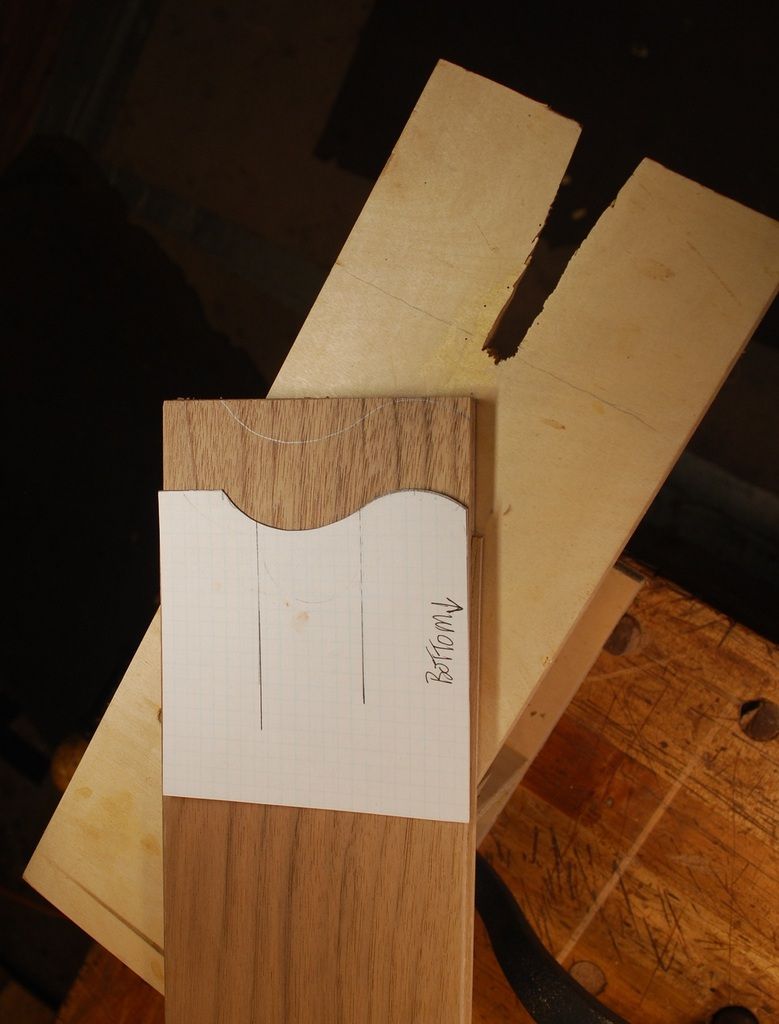
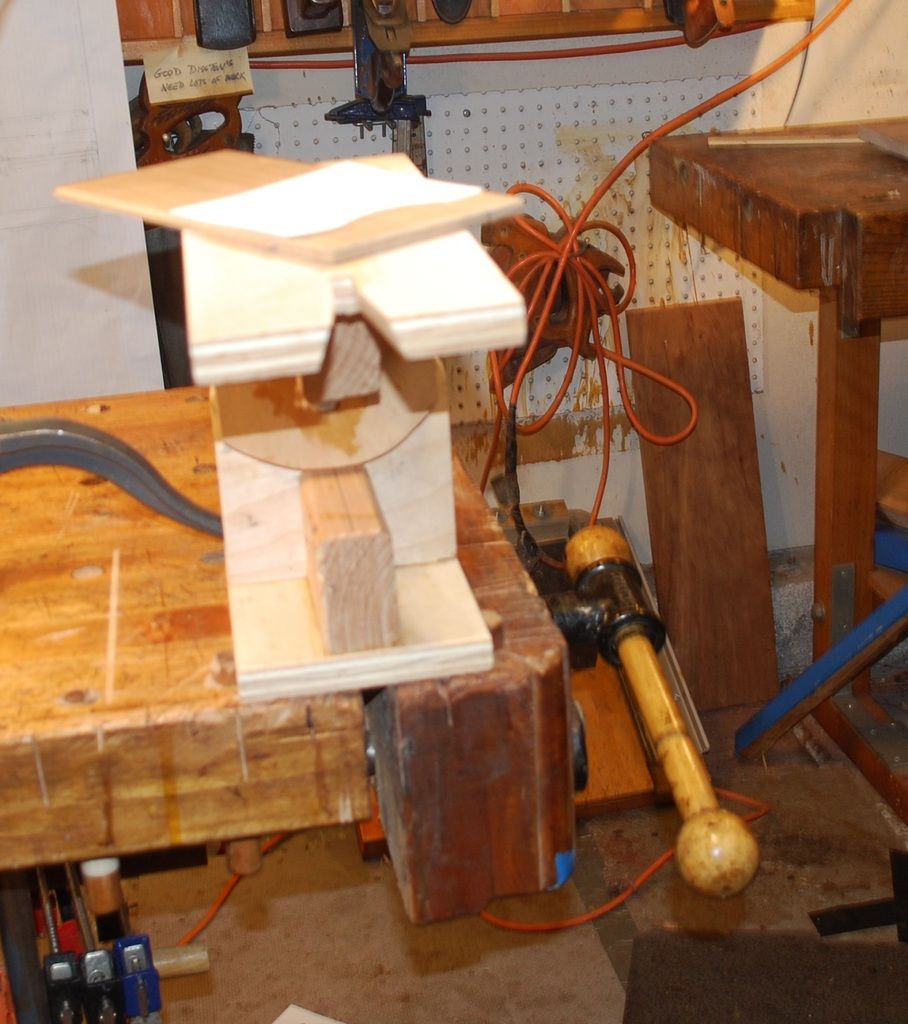
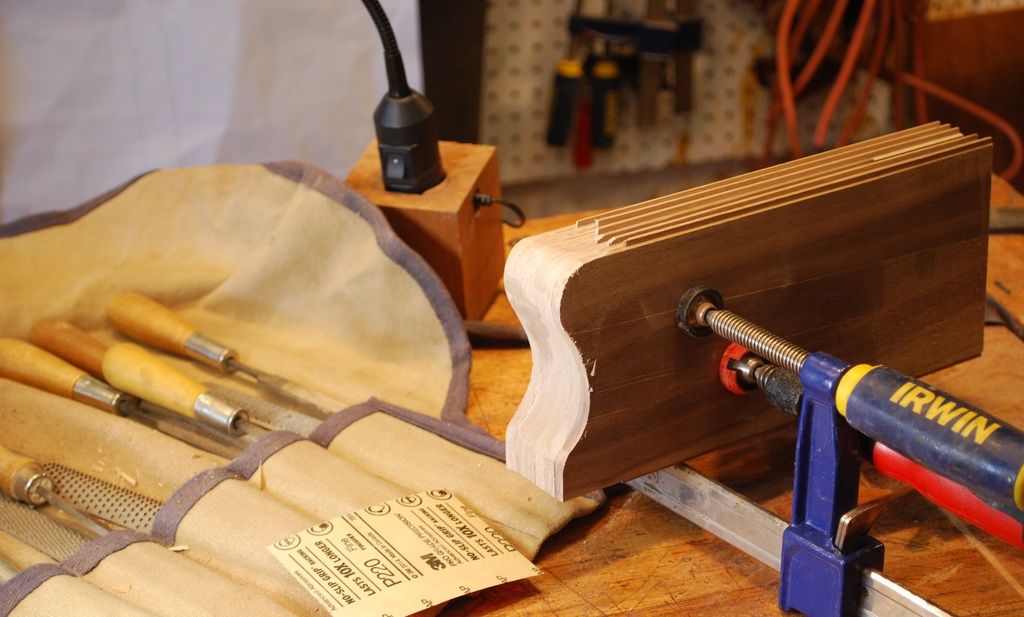
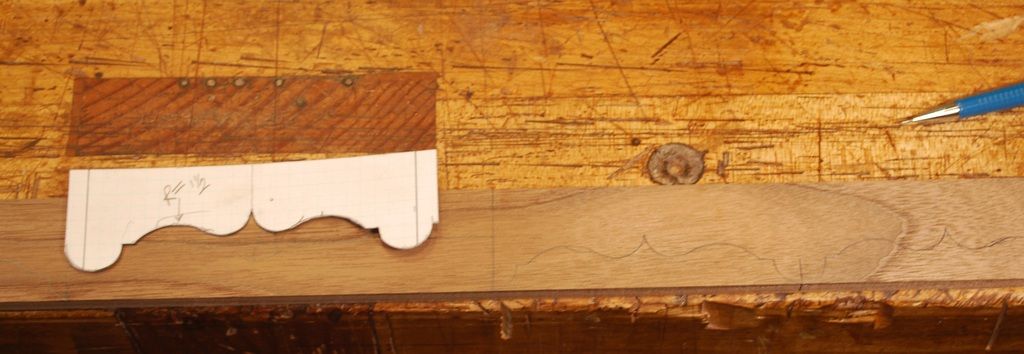
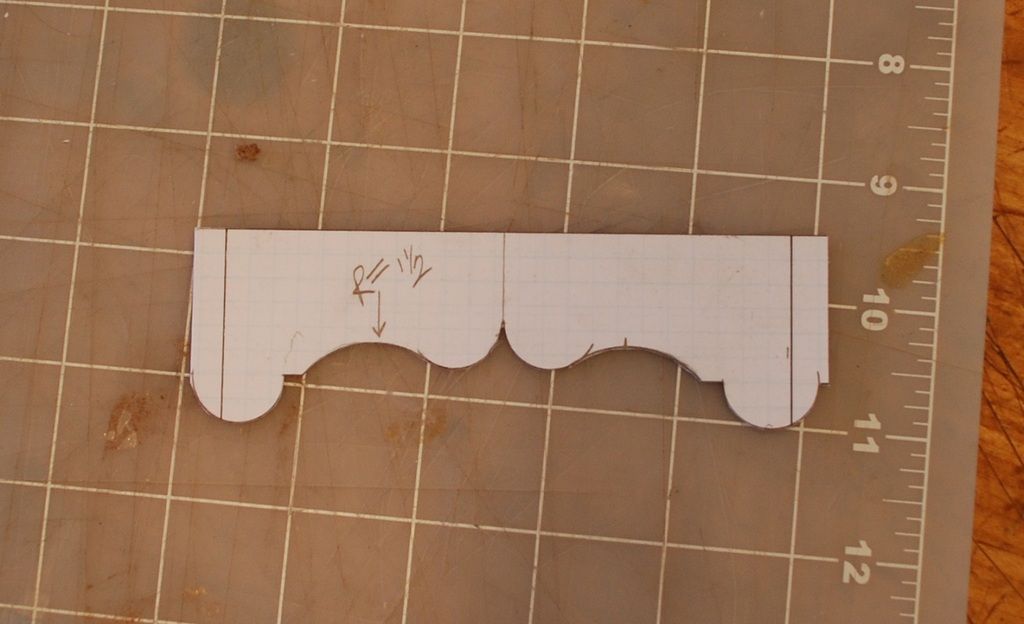
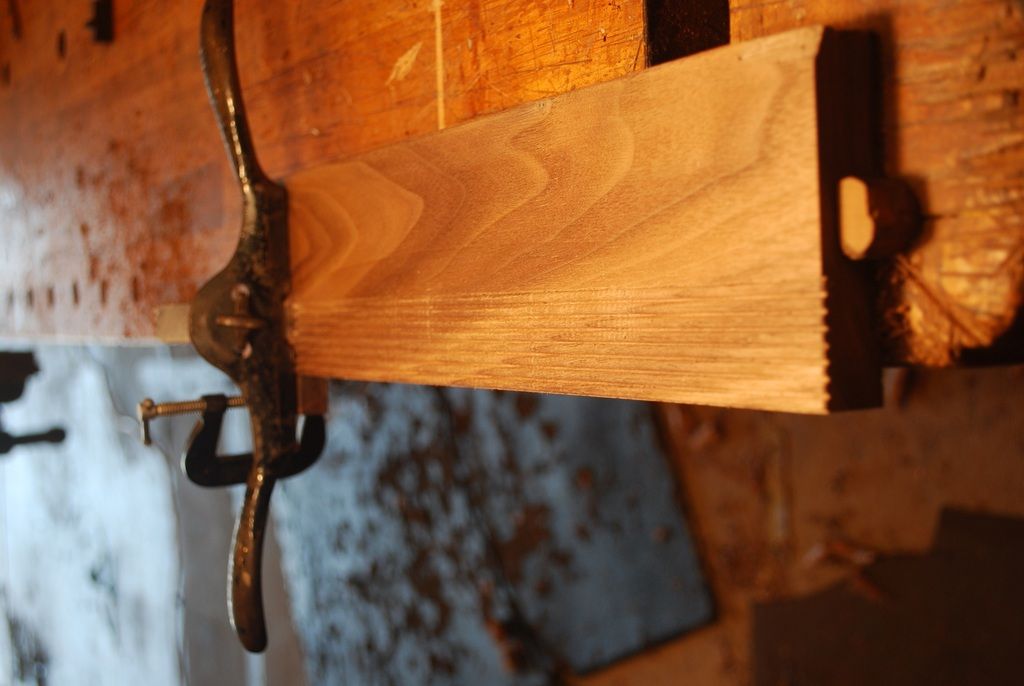

 Reply With Quote
Reply With Quote